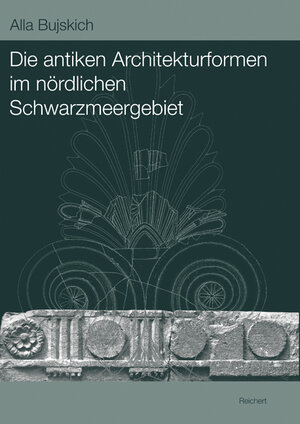
„Ungeachtet solcher Anmerkungen (...) bleibt die Arbeit aber eine ausdrücklich zu lobende Grundlagenarbeit und beeindruckende Erschließungsleistung. Mit ihr führt B. eine wichtige Materialgattung der griechischen Kultur dieser Region mit außergewöhnlicher Kenntnis und Materialdurchdringung der Diskussion zu. Sie wird eine internationale Rezeption der regionalen Architektur deutlich begünstigen. Unbedingt anregend, stellt sie die Architekturforschung zur Region in vielerlei Hinsicht auf eine neue Basis, auf der weiterführende Fragen überhaupt erst in Angriff genommen werden können, etwa nach der Bedeutung monumentaler Architektur im Rahmen kolonialer Erfahrung oder nach kontextuell unterschiedlichen semantischen Dimensionen von Architektur.“
Patric-Alexander Kreuz
In: Göttinger Forum für Altertumswissenschaft. 14 (2011) S. 1157-1164.
http://gfa. gbv. de/dr, gfa,014,2011, r,23. pdf
(15.05.2012)
Die antiken Architekturformen im nördlichen Schwarzmeergebiet
Herkunft und Entwicklung
von Alla BujskichThis study is devoted to investigate the development of architectural orders in public and private architecture in the major Greek colonies in the northern part of the Black Sea area. Detailed analysis of architectural members lets us conclude that only one stylistic influence, mainly associated with the region of southern Ionia, affected the earliest pieces of Ionic order, and that this influence can be traced primarily to Miletus, the mother city of the first colonies in the North Pontus.
Until the end of the Late Archaic period we are able to see a development of a local Ionic style in Olbia and the Bosporan region, especially also in Pantikapaion. The first public buildings with architectural decoration were represented by altars and temples. But during the 5th through 4th century B. C. different stylistic influences were effective: The north-western area was closely linked to Attica - local stone production of architectural details was dominated by Ionic and Doric orders under Attic influence. The north-eastern region, however, shows a strong influence of the Ionic order in Asia Minor, while the style in the Bosporan state, both the European and Asian parts, was shaped by public architecture at the capital, Pantikapaion. In the Hellenistic period, the development of monumental architecture using the different orders culminated in all regions of the North Pontus: Local architectural workshops flourished. It was the time when the third, the Corinthian order appeared, used mainly in small architectures as for example often in grave monuments, precincts and naiskoi. During the whole pre-Roman period, less than 10 percent of marble pieces were imported, mainly belonging to the Ionic and Corinthian orders.
The appearance of the Romans in the region stopped the development of local architectural schools. Since then we find - in the 1st century A. D. - copies of Tuscan and Corinthian orders under the influence of Italian workshops, thus a western tradition. Later, from Hadrianic times until the end of the 3rd century, architectural decorations of public architecture depend on the style closely connected with the imperial marble trade: Import from Prokonnesos Island via the Black Sea was obviously preferred to local production, resulting in an amount of ca. 70 percent of imported marble decoration during the Imperial Period.
As the main result of this study on architectural members in the North Pontic region we are able to incorporate this area into the general process of developing Greek architectural forms and thus reveal another aspect of the acculturation during the Greek colonization.


